Ready to take your startup to the next level?
Unlock the full potential of your revenue growth with our innovative digital strategies and cutting-edge technologies.
Maximizing revenue growth is essential for startups, and digital strategies offer efficient ways to achieve it. Utilize social media, website optimization, content marketing, email automation, and analytics. Embrace technology for agility and quality control.
Social media provides insights and direct interaction. Optimize websites and use content marketing to drive traffic. Email automation nurtures relationships and generates leads. Analyze metrics for success. These digital approaches empower startups to thrive and succeed long-term.
Table of Contents
- Introduction to Maximizing Revenue Growth
- Understanding the Benefits of Digital Strategies for Startups
- Developing an Innovative Digital Strategy
- Utilizing Technology to Promote Growth
- Leveraging Social Media for Increased Reach
- Optimizing Your Website for Improved Engagement
- Driving Traffic Through Content Marketing Strategies
- Generating Leads with Email Automation Tactics
- Measuring Success with Analytical Tools
- Final Thoughts
Introduction to Maximizing Revenue Growth
Maximizing revenue growth is a top priority for all businesses, regardless of their size or sector. Startups, in particular, often face the pressure to succeed quickly with limited resources. Fortunately, there are many innovative digital strategies available that can help startups achieve growth with minimal effort. By leveraging digital technologies such as social media, website optimization, content marketing, email automation, and analytics tools, startups can create an effective strategy for increasing revenue and staying ahead of the competition.
Understanding the Benefits of Digital Strategies for Startups
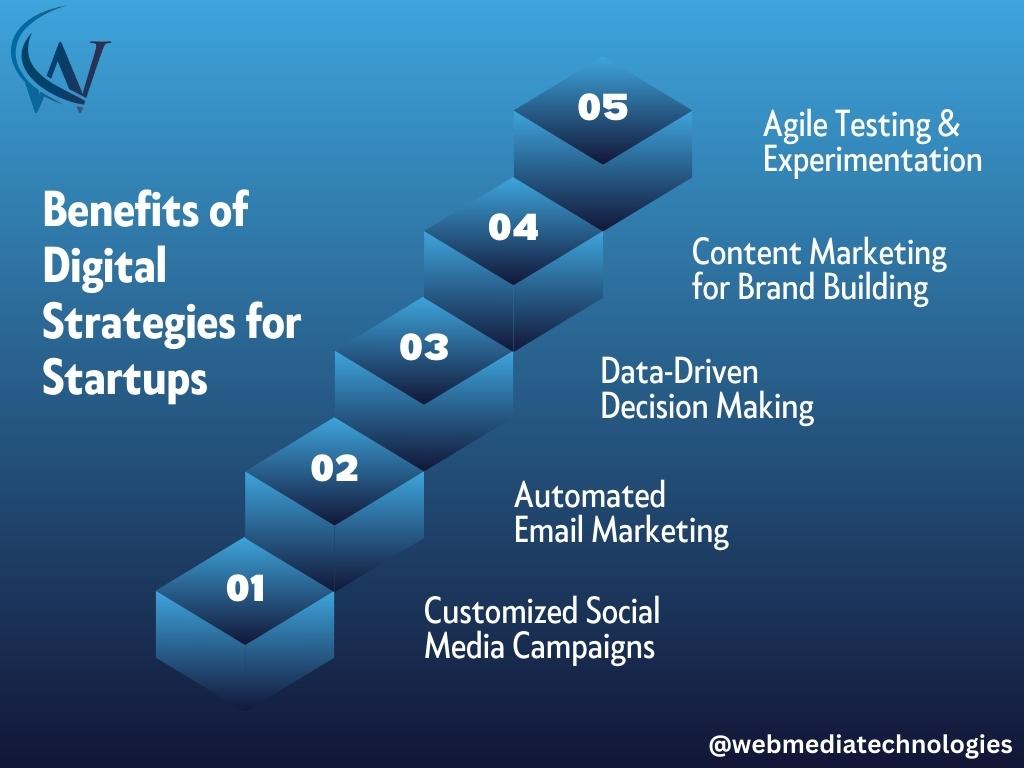
Digital strategies offer several advantages for promoting growth in a startup business. These include increased reach through social media, improved customer engagement through website optimization, cost-effective lead generation through email automation, data-driven decision making through analytics, and leveraging content marketing to drive traffic. Additionally, digital strategies enable startups to be agile and test new ideas without heavy upfront investments. These benefits make digital strategies crucial for maximizing revenue growth in any successful startup.
- Customized Social Media Campaigns: Startups can create targeted social media campaigns to increase their reach and engagement with their target audience. By targeting specific demographics and using analytics to track engagement, startups can optimize their social media presence and grow their brand awareness.
- Personalized Website Experiences: Startups can leverage website optimization techniques to provide a personalized experience to their visitors. This can include personalized recommendations, tailored content, and interactive features that engage users and increase their likelihood of converting into customers.
- Automated Email Marketing: Startups can implement email automation tools to generate cost-effective leads. By creating automated email campaigns, startups can nurture leads, provide valuable content, and drive conversions. This helps in building a loyal customer base and increasing revenue.
- Data-Driven Decision Making: Digital strategies allow startups to collect and analyze data to make informed business decisions. By tracking user behavior, conversion rates, and other key metrics, startups can identify trends, optimize their marketing strategies, and allocate resources effectively.
- Content Marketing for Brand Building: Startups can leverage content marketing to establish themselves as industry experts and drive traffic to their website. By creating valuable and informative content through blogs, videos, and infographics, startups can attract and engage their target audience, ultimately leading to increased brand awareness and revenue growth.
- Agile Testing and Experimentation: Digital strategies enable startups to test new ideas and strategies without making heavy upfront investments. Startups can quickly experiment with different marketing channels, messaging, and offers to identify what works and what doesn’t. This agility allows them to adapt and optimize their strategies for maximum growth.
- Enhanced Customer Relationship Management: Digital strategies provide startups with tools and platforms to manage and nurture customer relationships effectively. Startups can use customer relationship management (CRM) software to track customer interactions, personalize communication, and provide exceptional customer service. This helps in building long-term customer loyalty and repeat business.
- Global Reach and Expansion Opportunities: With digital strategies, startups can expand their reach beyond their local market. They can tap into global markets through online advertising, e-commerce platforms, and localization strategies. This opens up new growth opportunities and potential revenue streams for startups.
- Real-Time Performance Tracking: Digital strategies allow startups to track and measure their marketing efforts in real-time. Startups can monitor key performance indicators (KPIs) such as website traffic, conversion rates, and customer acquisition costs. This allows them to make data-driven adjustments and optimizations to their marketing campaigns for better results.
- Competitive Advantage: By embracing digital strategies, startups can gain a competitive advantage over traditional businesses that may be slower to adapt. Startups can leverage innovative marketing tactics, digital tools, and emerging technologies to differentiate themselves and attract customers in unique ways. This can help them stand out in the market and achieve faster growth.
Developing an Innovative Digital Strategy
Before starting a new digital strategy, businesses should specify their goals and determine which channels will be most effective for achieving them. This involves deciding whether they want to increase brand awareness or generate leads and whether they need an SEO strategy or content marketing campaign.
Once these questions are answered, businesses can create a detailed plan that outlines how each channel should be utilized and what resources are needed to achieve desired outcomes. This approach enables startups to develop innovative solutions and measure their success against set goals, which is crucial for successful business planning.
- Utilizing AI and Machine Learning: Incorporating artificial intelligence and machine learning technologies into the digital strategy can help businesses analyze consumer data, identify patterns, and personalize the customer experience. This innovative approach can lead to more effective targeting and increased customer satisfaction.
- Embracing Social Media Platforms: Leveraging the power of social media platforms, businesses can develop innovative strategies to engage with their target audience, increase brand awareness, and drive customer engagement. Creative use of interactive content, influencer partnerships, and user-generated content can set businesses apart from their competitors.
- Implementing Virtual Reality (VR) and Augmented Reality (AR): Integrating VR and AR technologies into the digital strategy can create immersive and interactive experiences for customers. This can be applied to various industries, such as retail, tourism, or real estate, allowing customers to virtually explore products or locations before making a purchase decision.
- Investing in Chatbots and Virtual Assistants: Incorporating chatbots and virtual assistants into customer service processes can enhance efficiency and provide round-the-clock support. These AI-powered solutions can handle routine inquiries, freeing up human resources for more complex tasks and improving overall customer satisfaction.
- Emphasizing Mobile Optimization: As mobile usage continues to rise, businesses should prioritize mobile optimization in their digital strategy. This includes developing responsive websites, creating mobile apps, and utilizing mobile-specific advertising channels. Innovative mobile marketing strategies, such as location-based targeting or gamification, can further enhance customer engagement.
- Exploring Influencer Marketing: Collaborating with influencers who align with the brand values and target audience can help businesses reach a wider audience and build trust. Partnering with influencers on creative campaigns or co-creating content can generate innovative and authentic ways to promote products or services.
- Leveraging Data Analytics and Predictive Modeling: By utilizing data analytics and predictive modeling tools, businesses can gain insights into consumer behavior, market trends, and future opportunities. This data-driven approach enables businesses to make informed decisions and tailor their digital strategy accordingly for maximum impact.
- Integrating Voice Search Optimization: With the rising popularity of voice assistants like Amazon Alexa or Google Assistant, businesses should consider optimizing their digital presence for voice search. Developing strategies to optimize content for voice queries and leveraging voice-based advertising can help businesses stay ahead of the curve and reach a growing user base.
- Implementing Personalized Marketing Automation: Utilizing marketing automation tools with personalization capabilities can help businesses deliver tailored messages and offers to individual customers. By analyzing customer data and behavior, businesses can create personalized customer journeys, improving engagement and conversion rates.
- Exploring Emerging Technologies: Keeping an eye on emerging technologies such as blockchain, Internet of Things (IoT), or 5G can provide businesses with opportunities to develop innovative digital strategies. For example, utilizing blockchain for secure transactions or leveraging IoT devices for personalized marketing campaigns can differentiate businesses from competitors.
Utilizing Technology to Promote Growth
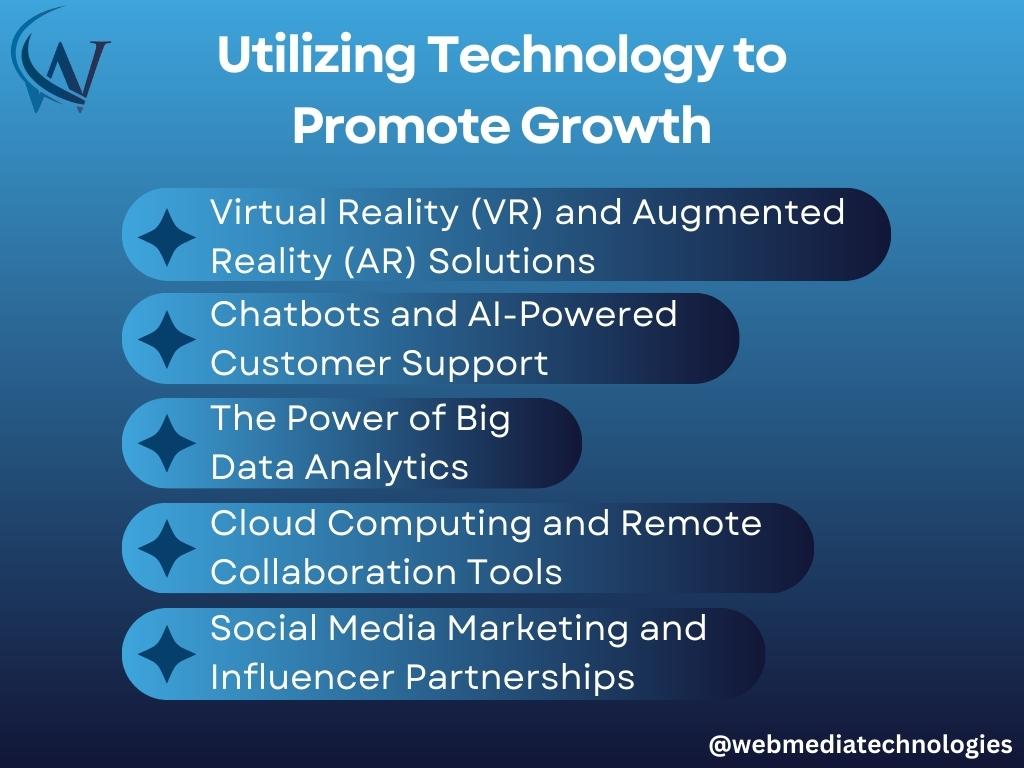
Technology has leveled the playing field for startups, providing affordable tools for efficient campaign launches and quality control. Real-time tracking, AI algorithms, and automation enhance productivity and streamline tasks. Implementing software programs like CRM and ERP systems optimizes operations across departments, leading to higher return on investment.
- Virtual Reality (VR) and Augmented Reality (AR) Solutions: Startups can leverage VR and AR to enhance their marketing campaigns and provide immersive experiences to potential customers. For example, a startup in the tourism industry can create virtual tours of destinations to attract travelers.
- Chatbots and AI-Powered Customer Support: Utilizing AI algorithms and chatbot technology can help startups provide efficient and 24/7 customer support. This not only enhances customer satisfaction but also reduces the need for human resources, resulting in cost savings.
- Big Data Analytics: Startups can harness the power of big data analytics to gain insights into customer behavior, market trends, and business performance. This information can be used to make data-driven decisions and optimize marketing strategies for better growth.
- Cloud Computing and Remote Collaboration Tools: Startups can leverage cloud computing to store and access their data securely, reducing the need for physical infrastructure and minimizing costs. Remote collaboration tools also enable teams to work efficiently from anywhere, promoting growth and scalability.
- Social Media Marketing and Influencer Partnerships: Startups can leverage social media platforms to promote their products or services, reaching a wider audience at a lower cost compared to traditional advertising methods. Additionally, collaborating with influencers can help startups gain credibility and increase brand awareness.
- E-commerce Platforms and Mobile Apps: Implementing e-commerce platforms and developing mobile apps can provide startups with an additional revenue stream and expand their customer reach. It also enables customers to make purchases conveniently, leading to increased sales and growth.
- Internet of Things (IoT) Integration: By integrating IoT devices and sensors into their products or services, startups can collect real-time data and provide personalized experiences to customers. For example, a fitness startup can utilize IoT devices to track users’ health and provide customized workout plans.
- Automation of Repetitive Tasks: Startups can automate repetitive tasks using software programs and tools such as robotic process automation (RPA). This frees up employees’ time to focus on more strategic and value-added activities, accelerating growth and innovation.
- Online Learning Platforms: Creating online learning platforms can help startups monetize their expertise and attract a broader audience. This can be particularly beneficial for startups in the education or training industry.
- Blockchain Technology: Startups can explore the use of blockchain technology to enhance transparency, security, and efficiency in various industries. For example, a startup in the supply chain industry can use blockchain to track and verify the authenticity of products, reducing counterfeit issues.
Overall, utilizing technology in various aspects of a startup’s operations can promote growth by improving efficiency, increasing productivity, and enhancing customer experiences.
Leveraging Social Media for Increased Reach
Social media has emerged as a vital platform for businesses to expand their brand visibility and generate sales. It offers unprecedented global access to potential customers and provides valuable information on consumer preferences and trends. Moreover, platforms like Facebook and Twitter allow companies to directly engage with their target audience, fostering relationships and building customer loyalty. When utilized effectively, social media can be a powerful tool for increasing conversions and ultimately enhancing profits.
- Influencer Partnerships: Collaborate with popular social media influencers in your industry to increase your brand’s reach. Influencers have a large following and can help promote your products or services to their audience, resulting in increased brand visibility and potential sales.
- User-Generated Content Campaigns: Encourage your customers to create and share content related to your brand on social media. This can include reviews, testimonials, or creative content like photos or videos. By sharing user-generated content, you can showcase real-life experiences with your products or services and build trust with potential customers.
- Social Media Contests and Giveaways: Organize contests or giveaways on your social media platforms to engage your audience and increase reach. Encourage participants to share your content or tag their friends, helping to spread awareness about your brand to a larger audience.
- Live Video Streaming: Utilize platforms like Facebook Live or Instagram Live to stream live events, product launches, or behind-the-scenes content. Live videos generate higher engagement as they provide an authentic and interactive experience for your audience. This can lead to increased reach and customer interest in your brand.
- Social Media Advertising: Invest in targeted social media advertising campaigns to reach a wider audience. Platforms like Facebook and Instagram offer advanced targeting options, allowing you to reach specific demographics or interests relevant to your business.
- Collaborate with Complementary Businesses: Partner with other businesses in your industry that offer complementary products or services. By cross-promoting each other on social media, you can tap into each other’s audiences and increase brand reach for both companies.
- Engage with Customers Through Social Media: Respond promptly to customer inquiries, comments, and reviews on social media platforms. By engaging with your audience, you can build strong customer relationships, foster loyalty, and encourage positive word-of-mouth recommendations.
- Utilize Social Listening Tools: Monitor social media platforms for mentions of your brand or industry keywords using social listening tools. This allows you to identify customer feedback, trends, and opportunities for engagement, helping to improve your social media strategy and increase reach.
- Collaborate with Micro-Influencers: Micro-influencers have smaller but highly engaged followers and can be more cost-effective for businesses with limited budgets. Partnering with micro-influencers can help you reach niche audiences and drive targeted traffic to your social media profiles.
- Analyze and Optimize Social Media Performance: Regularly analyze your social media performance using analytics tools. Identify which content, campaigns, or strategies are generating the most engagement and reach, and optimize your future social media efforts based on these insights.
Optimizing Your Website for Improved Engagement
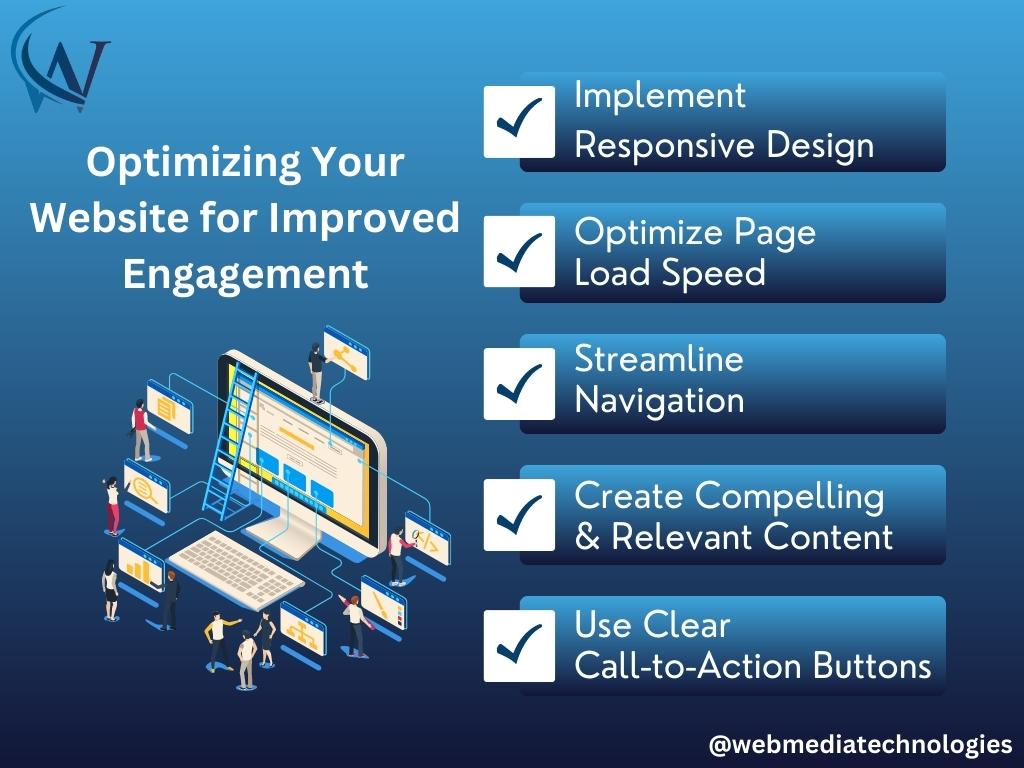
Website optimization is a crucial part of any successful online presence, as it ultimately determines whether visitors stay engaged with your site or leave after a few seconds. Companies should use techniques such as A/B testing and multivariate testing to ensure that they create user experiences tailored towards specific target audiences.
Furthermore, using heat mapping software can help track user movements around the page, giving a deeper understanding of what elements attract attention from visitors and enabling further improvements based on this data.
- Implement Responsive Design: Make sure your website is mobile-friendly and adjusts seamlessly across different devices. This will improve user experience and engagement for visitors accessing your site from smartphones or tablets.
- Optimize Page Load Speed: Slow-loading websites can frustrate visitors and lead to high bounce rates. Use tools like Google PageSpeed Insights to identify and fix issues that may be slowing down your site’s performance.
- Streamline Navigation: Simplify your website’s navigation menu to make it intuitive and easy to use. Visitors should be able to find what they’re looking for quickly and effortlessly.
- Create Compelling and Relevant Content: Engaging copy, informative articles, and visually appealing multimedia content can keep visitors interested and encourage them to explore your site further.
- Use Clear Call-to-Action Buttons: Strategically place call-to-action buttons throughout your website to guide visitors towards desired actions, such as making a purchase or signing up for a newsletter.
- Optimize Images and Videos: Compress images and videos to reduce file sizes without compromising quality. This will help improve page load speed and enhance the overall user experience.
- Incorporate Social Sharing Buttons: Make it easy for visitors to share your content on social media platforms. This can increase your website’s visibility and drive more traffic.
- Personalize User Experience: Utilize data analytics to understand your target audience better and tailor the website experience accordingly. Implement personalized recommendations or product suggestions based on user behavior.
- Improve Readability: Use legible fonts, proper spacing, and appropriate font sizes to enhance readability. Break up content with headings, bullet points, and subheadings to make it easier for visitors to scan and find relevant information.
- Optimize for Search Engines: Implement SEO techniques to improve your website’s visibility in search engine results. This includes optimizing meta tags, using relevant keywords, and creating high-quality backlinks to improve organic traffic and engagement.
Driving Traffic Through Content Marketing Strategies
Content marketing is an essential strategy for promoting products or services online. By creating valuable and engaging content, businesses can attract potential customers who are searching for relevant information related to their industry. This helps increase organic traffic to their website. Examples of content marketing include blog posts, white papers, case studies, infographics, and podcasts. It is crucial to maintain consistent quality of information to establish credibility with readers.
- Collaborate with Industry Influencers: Partnering with influencers in your industry can help drive traffic to your content. They can share your content with their followers, exposing your brand to a wider audience and driving more traffic to your website.
- Utilize Social Media Platforms: Promote your content on various social media platforms to reach a larger audience. Create eye-catching and engaging posts with snippets from your content, enticing users to click through to your website.
- Optimize Content for Search Engines: Implement search engine optimization (SEO) techniques to ensure your content ranks higher in search engine results. This will increase the visibility of your content and drive organic traffic to your website.
- Guest Blogging: Contribute guest posts to influential blogs in your industry. This not only helps establish your credibility but also allows you to include backlinks to your own content, driving traffic back to your website.
- Offer Downloadable Resources: Create valuable resources such as e-books, templates, or guides that visitors can download in exchange for their email addresses. This not only helps build your email list but also drives traffic to your website as people share these resources with others.
- Engage with your Audience: Encourage comments, shares, and discussions on your content to increase engagement. This not only helps build a loyal community but also generates more visibility as people share and discuss your content, driving traffic back to your website.
- Repurpose Content: Repurpose your existing content into different formats such as videos, slideshows, or webinars. This allows you to reach a wider audience and attract traffic from different platforms.
- Collaborate with Complementary Businesses: Partner with businesses in related but non-competing industries to create joint content or cross-promote each other’s content. This expands your reach to their audience and drives traffic to your website.
- Use Email Marketing: Send regular newsletters or email updates to your subscribers, featuring your latest content. This keeps your audience engaged and encourages them to visit your website for more information.
- Conduct Webinars or Live Sessions: Host webinars or live sessions where you can share valuable insights and answer questions from your audience. This not only positions you as an industry expert but also drives traffic as people attend these sessions and visit your website for more information.
Remember, consistency is key in content marketing. Regularly create and share high-quality content to establish credibility and keep attracting traffic to your website.
Generating Leads With Email Automation Tactics
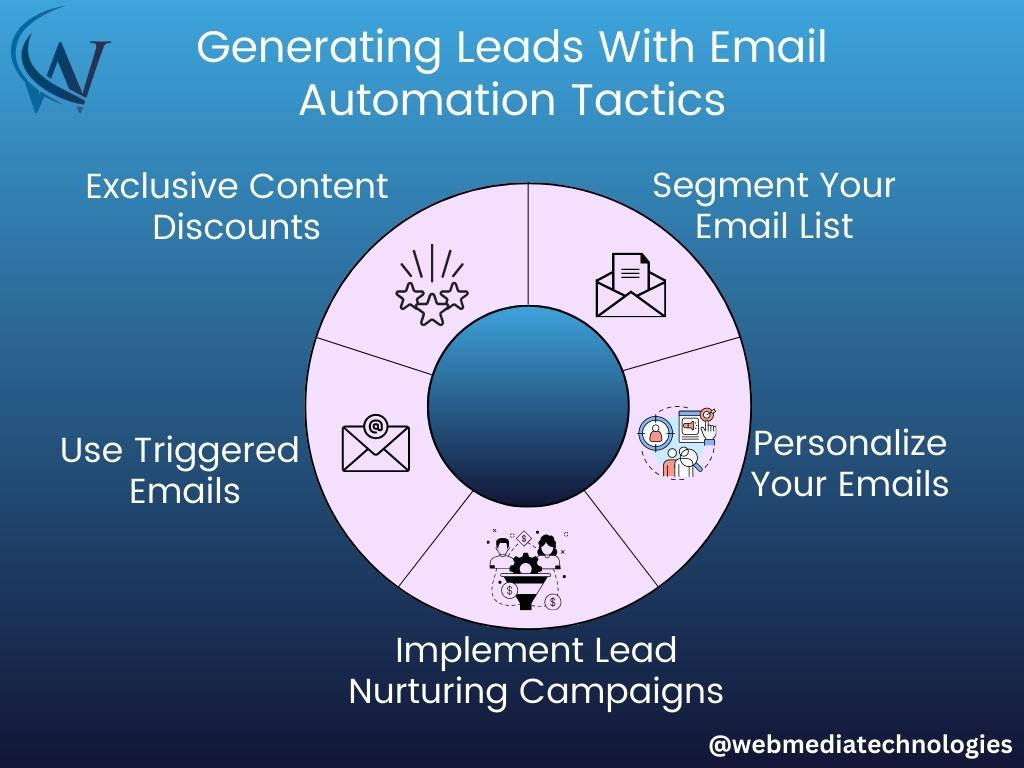
Email automation is a powerful tool for building and maintaining relationships with customers. By sending personalized emails to interested individuals, companies can capture their attention and encourage them to sign up for products or services. Automating follow-up emails after a purchase can also turn one-time buyers into repeat customers, increasing customer retention rates. Lastly, automated newsletters keep subscribers updated on company news and foster higher engagement.
- Segment Your Email List: Use email automation to segment your email list based on customer preferences, demographics, or previous interactions. This allows you to send targeted and personalized emails that are more likely to capture their attention and generate leads.
- Personalize Your Emails: Use email automation to personalize emails with the recipient’s name, previous purchases, or specific interests. This creates a sense of familiarity and shows that you value their individual needs, increasing the chances of conversion.
- Implement Lead Nurturing Campaigns: Set up automated email sequences that nurture leads over time. By sending a series of educational and informative emails, you can build trust, establish your expertise, and guide prospects towards making a purchase.
- Use Triggered Emails: Set up triggered emails that are automatically sent based on specific actions or behaviors. For example, if a user abandons their cart, you can send a reminder email with a special offer to encourage them to complete the purchase.
- Offer Exclusive Content or Discounts: Use email automation to send exclusive content or special discounts to your subscribers. This not only adds value for your audience but also incentivizes them to engage with your emails and potentially convert into leads.
- Leverage Social Proof: Include customer testimonials, reviews, or case studies in your automated emails. Social proof can be a powerful tool to build trust and credibility, encouraging leads to take the desired action.
- Optimize Email Timing: Experiment with different sending times and days of the week to find the optimal timing for your audience. Using email automation, you can schedule emails to be sent at the most effective times, ensuring higher open and click-through rates.
- A/B Test Subject Lines and Email Content: Use email automation to test different subject lines, email designs, or call-to-action buttons. By analyzing the results, you can refine your emails to improve engagement and conversion rates.
- Gamify Your Emails: Incorporate gamification elements into your automated emails to increase engagement and lead generation. For example, you can include quizzes, challenges, or interactive content that not only entertains but also captures data about your subscribers’ preferences and interests.
- Monitor and Analyze Email Metrics: Utilize email automation tools to track metrics such as open rates, click-through rates, and conversion rates. Analyzing this data allows you to identify trends, optimize your email campaigns, and generate more leads over time.
Measuring Success With Analytical Tools
Analytics play a major role in understanding the performance of various online campaigns and measuring success against set goals. Tracking metrics such as conversion rate, click-through rate, and bounce rate allows companies to adjust their strategic direction accordingly. Moreover, analyzing customer behavior gives deeper insights into user journeys, providing an opportunity to refine websites and enhance the overall experience for users, leading to increased sales and revenues in the long term.
- Develop a Comprehensive Analytics Dashboard: Create a user-friendly dashboard that consolidates all relevant metrics and KPIs in one place. This will enable businesses to easily track and measure the success of their online campaigns and make informed decisions.
- Implement A/B Testing: Use analytical tools to compare different versions of web pages, ads, or email campaigns to determine which one performs better. This will help businesses optimize their marketing efforts and focus on strategies that yield the highest conversion rates.
- Utilize Heatmaps: Use analytical tools to generate heatmaps that visually represent user engagement on web pages. This can provide valuable insights into which areas of a page are most engaging or problematic, allowing businesses to make necessary improvements for better user experiences.
- Conduct Customer Segmentation Analysis: Analyze customer data to identify different segments within the target audience. This will enable businesses to tailor their marketing messages and strategies to specific customer groups, increasing the likelihood of conversions and sales.
- Implement Funnel Analysis: Use analytical tools to track and analyze the customer journey from the initial interaction with a website or campaign to the final conversion. This will help businesses identify any bottlenecks or areas where potential customers are dropping off, allowing for targeted optimization.
- Monitor Social Media Engagement: Analytical tools can track social media metrics such as likes, shares, and comments. This data can help businesses gauge the success of their social media campaigns and identify opportunities for improvement.
- Analyze Referral Sources: Use analytical tools to identify which channels or sources are driving the most traffic and conversions. This information can guide businesses in allocating their marketing budgets effectively and focusing on channels that yield the highest return on investment.
- Set Up Goals and Track Conversion Rates: Utilize analytics to set specific goals for online campaigns and track the conversion rates. By regularly monitoring and analyzing these metrics, businesses can make data-driven decisions to optimize their strategies and improve overall success rates.
- Utilize Predictive Analytics: Use advanced analytical tools to predict future trends and behaviors based on historical data. This can help businesses make proactive decisions and adapt their strategies to stay ahead of the competition.
- Leverage Customer Feedback: Analytical tools can help gather and analyze customer feedback, such as surveys or reviews. This information can provide valuable insights into customer satisfaction and preferences, allowing businesses to make necessary improvements and enhance the overall customer experience.
Final Thoughts
The world today is powered by digitization, leading to the rise of various innovative technologies that aid entrepreneurs in maximizing revenue growth even with limited resources at hand. Every business needs to develop a comprehensive plan incorporating the latest technologies and implementing creative solutions in order to stay competitive in current market conditions. Implementing the right combination of tactics outlined above will undoubtedly lead to higherreturns on investments, ensuring long-term success for the venture.
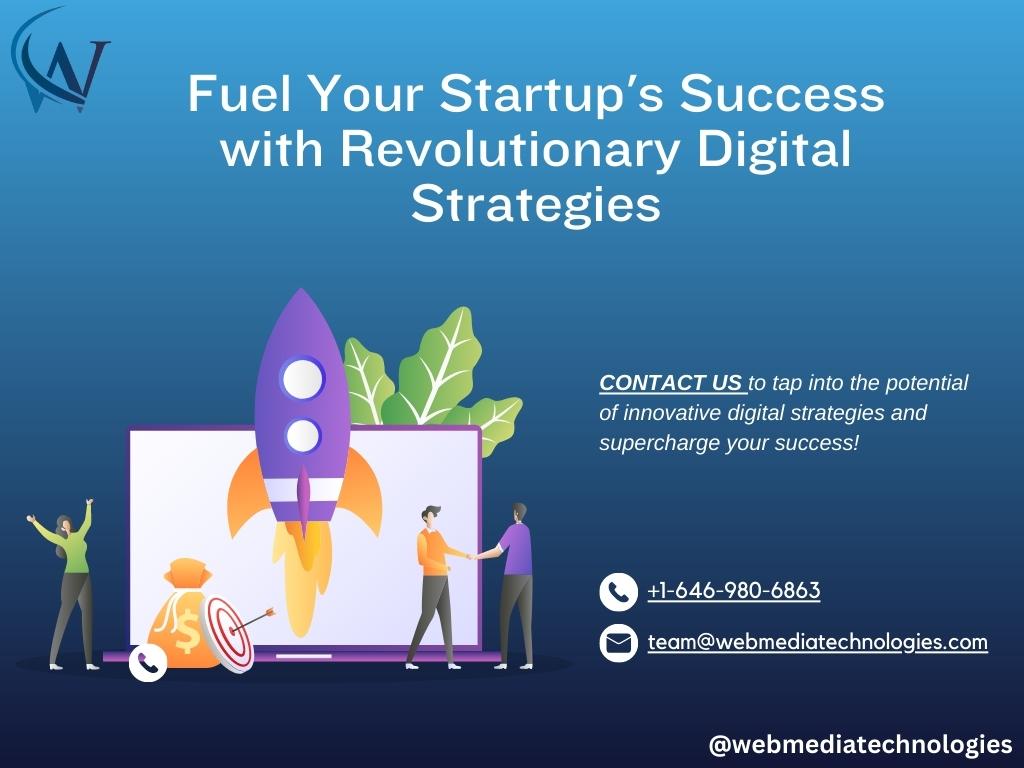
Don’t miss this opportunity to boost brand reach, engage customers, and drive conversions. Let us tailor a plan for your success!
Avail our services now and supercharge your startup’s growth for long-term success.
Contact us today!

